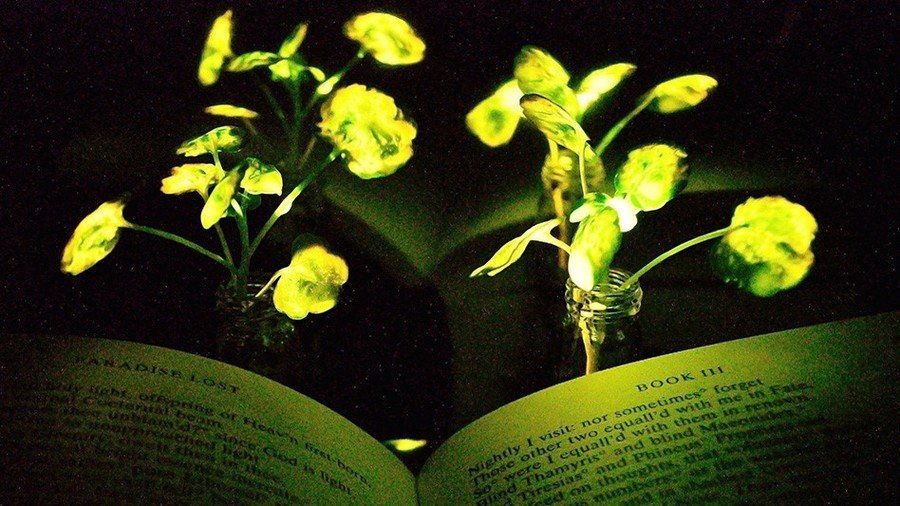Trees infused with firefly extract could replace street lights (VIDEO)

A watercress plant has been optimized to radiate low-level light for hours by scientists exploring alternative and potentially energy-saving methods of lighting.
Embedding the leaves with specialized nanoparticles, researchers from the Massachusetts Institute of Technology (MIT) and the University of California brought out the illuminating potential of a plant normally used in garden salads or sandwiches.
It’s thought that the technology could be transferred to bigger plants and even trees as an environmentally-appealing way to light large spaces.
READ MORE: Scientists create ‘lightning in a bottle’ for 1st time in history (VIDEO)
A light-emitting compound from fireflies, known as luciferin, and coenzyme A was added to silica nanoparticles. This mixture was then suspended in solution before being infused with watercress, which gave off a glow half as bright as a 1-microwatt LED.
The light lasted for up to four hours, according to the study. Previous studies have shown tobacco plants to be conducive to illumination through genetic modification. However, according to MIT, genetic engineering is more labor-intensive.
Detailed in the Nano Letters journal, the new infusion technique has been used on plants other than watercress, such as kale and spinach. It was funded by the US Department of Energy, which estimates that the majority of energy consumed by the nation is actually wasted through inefficient technology and heat loss.
Michael Strano, senior author of the study and chemical engineering professor at MIT, said he believes sustainable light from various forms of vegetation is possible. “The vision is to make a plant that will function as a desk lamp - a lamp that you don’t have to plug in. The light is ultimately powered by the energy metabolism of the plant itself,” he said.
READ MORE: MIT scientists ‘train’ spinach plants to sniff out bombs (VIDEO)
“Our target is to perform one treatment when the plant is a seedling or a mature plant, and have it last for the lifetime of the plant. Our work very seriously opens up the doorway to streetlamps that are nothing but treated trees, and to indirect lighting around homes.”
As a way to turn a light-emitting plant off, the study reveals that a nanoparticle containing a luciferase inhibitor can be added.














